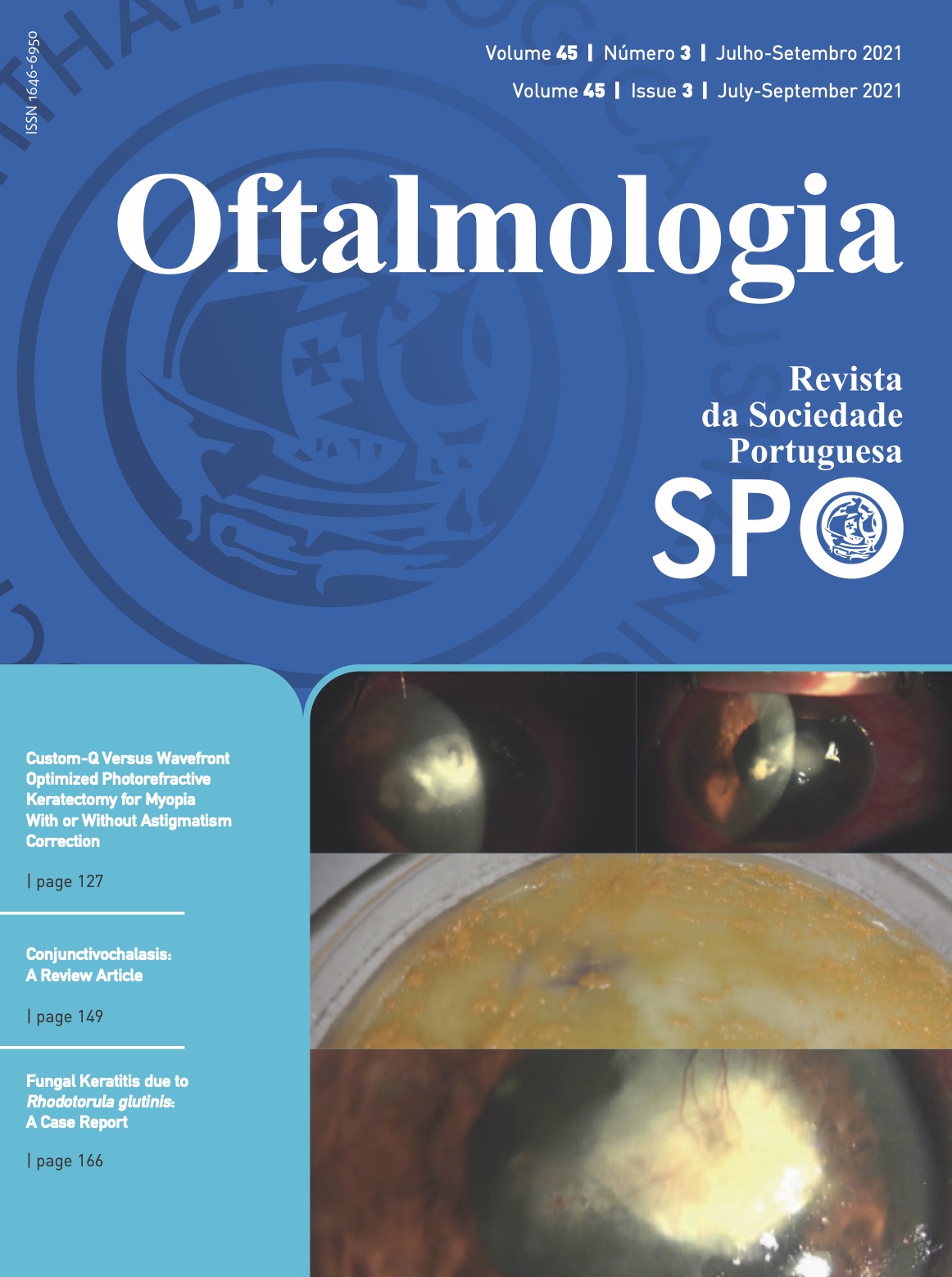Custom-Q versus Wavefront Optimized Photorefractive Keratectomy for Myopia with or without Astigmatism correction
DOI:
https://doi.org/10.48560/rspo.23306Keywords:
Astigmatism, Corneal Wavefront Aberration/physiopathology, Myopia, Photorefractive KeratectomyAbstract
Purpose:To compare the results between photorefractive keratectomy (PRK) with Custom-Q or with Wavefront-optimized (WFO) profiles in terms of asphericity and spherical aberrations, 6 months post-operative.
Setting:Tertiary referral center (Centro Hospitalar e Universitário da Universidade de Coimbra, Coimbra, Portugal).
Patients and Methods: Fifty-nine eyes (43 patients) were enrolled on this retrospective case series, including patients with myopia and/or astigmatism, submitted to refractive surgery with PRK (Allegretto WAVE Eye-Q Excimer Laser System, Alcon), in a Custom-Q ablation (38 eyes) or Wavefront-optimized procedure (21 eyes). We included patients with a minimum follow-up of 6 months; age over 21 years; stable refractive error for 2 years; spherical equivalent (SE) inferior to 5.50 diopters (D); percentage of altered tissue under 40% and expected final corneal curvature above 35 D. Eyes with other ophthalmological pathologies were excluded. Baseline and post-operative asphericity and optical aberrations were evaluated with Pentacam (Oculus Optikgeräte, Wetzlar, Germany).
Results: The demographic and preoperative refractive data was similar between groups (all p≥0.05). Post-operative spherical equivalent in the Custom-Q and Wavefront-optimized groups was within 0.50D in 100% and 78.90% of eyes, respectively and within 0.25D in 97.06% and 73.70% of eyes, respectively. Variation of Q-value was 0.62±0.34. (range -0.07-1.24) for Custom Q group, and 0.65±0.39 (range -0.05-1.40) in the Wavefront-optimized group (p=0.82). In a multivariate linear regression model, variation of Q-value was not influenced by the ablation profile (B=0.04, p=0.49, 95%CI [-0.08,0.17]). SE was a strong predictor (B=-0.30, p<0.01, 95%CI[-0.39,-0.21]). There was a significant increase in RMS higher-order aberrations (p<0.01for both groups) and no difference between groups (p=0.53).
Discussion and Conclusion: In our sample,Custom-Q ablation was not significantly different from Wavefront optimized ablation regarding post-operative asphericity. Although the increase in higher-order aberrations, both techniques were effective and safe for myopic and/or astigmatic correction up to -5.50D SE.
Downloads
Downloads
Published
How to Cite
Issue
Section
License
Copyright (c) 2021 Revista Sociedade Portuguesa de Oftalmologia

This work is licensed under a Creative Commons Attribution-NonCommercial 4.0 International License.
Do not forget to download the Authorship responsibility statement/Authorization for Publication and Conflict of Interest.
The article can only be submitted with these two documents.
To obtain the Authorship responsibility statement/Authorization for Publication file, click here.
To obtain the Conflict of Interest file (ICMJE template), click here





